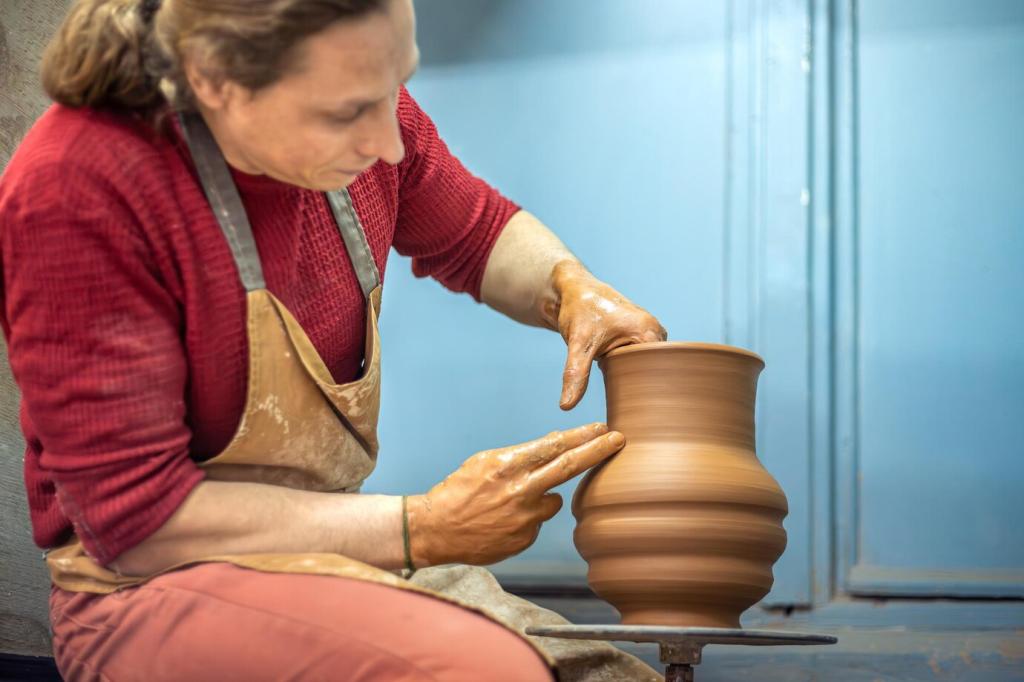Exploring the History of Craft Beer
Chosen theme: Exploring the History of Craft Beer. Step into a living timeline of flavors, people, and pivotal moments that shaped today’s craft beer scene. As you read, share your first craft beer memory in the comments and subscribe for future deep dives into brewing’s past and present.

From Ancient Ferments to Monastic Halls
Clay Jars and the Earliest Recipes
Archaeologists have found residue in ancient vessels and hymns like the Sumerian ode to Ninkasi, revealing beer as nutrition, ritual, and social glue. These proto-brews were wild, grainy, and communal—an origin that modern craft brewers honor by reviving heritage grains and rustic techniques.
Monks, Manuscripts, and Measured Mash
Medieval monasteries refined brewing with careful logs, consistent schedules, and a mission of hospitality. Their methodical mash routines and attention to cleanliness created replicable quality. Today’s craft ethos—respect for process, precision, and purpose—draws directly from those cool stone halls and illuminated margins.
When Hops Took the Stage
Between the ninth and thirteenth centuries, brewers increasingly embraced hops, improving preservation, bitterness, and balance. Trade routes spread both ingredients and ideas, setting foundations for regional styles. Craft brewers now treat hop varieties like a historian treats sources, each cone telling a different chapter of flavor.
Guilds, Laws, and Lager’s Long March
In 1516, Bavaria’s Reinheitsgebot limited beer to barley, water, and hops, aiming for fair prices and consistent quality. Yeast would later join the cast. Craft brewers treat such laws as historical lenses, respecting tradition while asking how creativity can converse with centuries of regulation.


Guilds, Laws, and Lager’s Long March
Guilds protected skills, taverns hosted debate, and styles like porter rose with bustling cities. Towering vats and standardized measures met a thirst for reliability. Craft beer inherits that social heartbeat, translating historic pub culture into today’s taprooms, festivals, and collaborative brew days.
Industry, Adversity, and the American Dry Spell
Steam power and chemistry transformed brewing consistency, but consumers worried about adjuncts and shortcuts. Early purity movements framed beer as food worthy of trust. Craft brewers still navigate that tension, disclosing ingredients and processes to rebuild a relationship based on transparency and flavor.

In 1978, homebrewing became legal again in the United States, energizing clubs, competitions, and kitchen experiments. Charlie Papazian’s friendly mantra—“Relax, don’t worry”—created a welcoming on-ramp. Many craft founders began with bubbling carboys beside ovens, writing history with siphons and spoons.
The Spark of Revival: Homebrewers and Early Pioneers
The IPA Reimagined
Born in British trade routes, IPA returned as a canvas for American hops—resinous West Coasts, juicy New Englands, and everything between. Names like Citra and Mosaic became cultural signals. Each pour revisits a dusty ledger, then scribbles something audacious in the margins.
Sour Traditions Meet Modern Technique
Lambic and gueuze taught patience and wildness, while kettle sours offered accessible tart refreshment. Mixed-fermentation foeders hum beside lab benches. Craft brewers frame acidity as historical dialect, letting microbes and time speak in eloquent, tart syllables across glass and palate.
Barrels, Terroir, and Local Grain
From bourbon barrels to wine-soaked staves, wood became a storyteller. Maltsters revived landrace barley, farmers offered heritage wheat, and terroir gained traction. Craft history now includes fields and forests, urging drinkers to taste place, season, and memory in each careful sip.
How to Explore Craft Beer History Today
Taste with a Timeline
Build a flight that moves chronologically: a rustic farmhouse ale, a classic pilsner, a resurgent porter, a modern IPA. Note how ingredients and intentions evolve. Share your lineup with us, and tell readers which era’s flavors surprised you most.
Visit, Read, and Remember
Seek brewery museums, community archives, and oral histories. Revisit Michael Jackson’s writings and local zines. Interview veteran publicans who lived the transition from macro monotony to craft abundance. Post your favorite resources, and subscribe for our upcoming list of must-see beer history stops.
Join the Conversation
Comment with the first craft beer that changed your mind, or the oldest style you’ve tried. Suggest topics—gruit revivals, pre-Prohibition lagers, or monastery traditions—we should investigate next. Subscribe and bring a friend; history tastes better when explored together.
